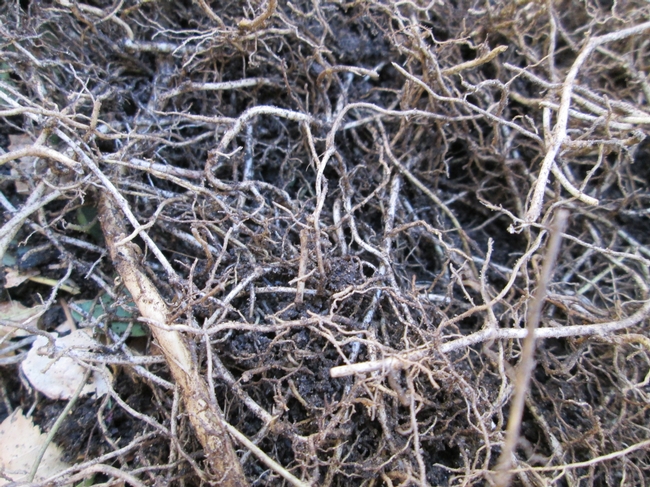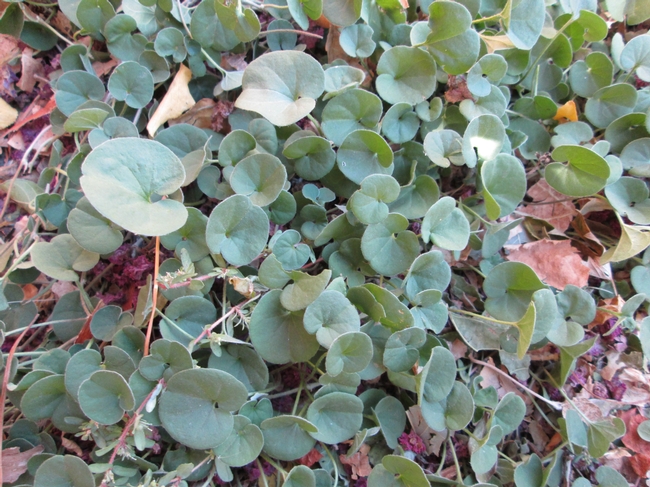Having spent best part of a week painstakingly trying to remove every scrap of Dichondra which has overrun a blueberry patch I am firmly of the opinion that it ranks with Bermuda grass as one of the most obnoxious weeds.
Dichondra micrantha was often planted as a lawn substitute until infestations of flea beetles proved devastating in some areas. It has small green leaves reminiscent of miniature water lily pads and spreads to make a dense mat by thread-like surface runners. It likes rich moist soil - just like blueberries.
We know not where the origination of this infestation began, but the blueberries were planted about seven years ago and have been mulched annually with a fairly thick top dressing of peat and fertilized using organic products. The first few strands of dichondra appeared about three years ago and grew quite rapidly, but it was fairly easy to remove from the soft peaty areas around the plant. However, this year the problem became much more serious, due mainly to lack of time to keep on top of it. 
What to do? Blueberries hate to have their roots disturbed, so hoeing is not an option, neither would a selective weedkiller be safe, so there was nothing for it but to get down on ones hands and knees and try to undermine the mats of weed while taking great care not to move or damage the blueberry roots. The roots of the dichondra are very fragile, and tiny pieces easily broke off, and even with judicious use of my Japanese hand hoe, I was constantly aware of the fact that I was unearthing the blueberry roots.
When I had got the soil as clean as possible, I applied a layer of peat, and covered that with thick black landscape fabric cut to fit around the plants as best as the multi-stemmed growth would allow. Concerned that in our desert climate this might result in overheating of the blueberry roots, I then applied a thick layer of pine needles as a mulch.
Only time will tell if all this effort will pay off, but I know that we will have to be vigilant next season and pull out any dichondra as soon as it reappears from any area of the garden.
Has anyone else been able to manage such a weed in an effective and permanent way? If so we should love to hear from you!
